Related Research Articles
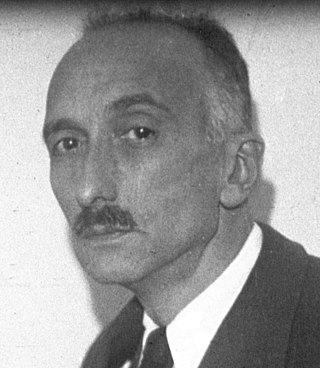
François Charles Mauriac was a French novelist, dramatist, critic, poet, and journalist, a member of the Académie française, and laureate of the Nobel Prize in Literature (1952). He was awarded the Grand Cross of the Légion d'honneur in 1958. He was a life-long Catholic.
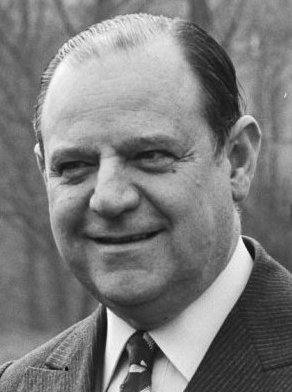
Raymond Octave Joseph Barre was a French centre-right politician and economist. He was a Vice President of the European Commission and Commissioner for Economic and Financial Affairs under three presidents and later served as Prime Minister under Valéry Giscard d'Estaing from 1976 until 1981. As a candidate for the presidency in 1988, he came in third and was eliminated in the first round. He was born in Saint-Denis, on the French island of Réunion, and then still a colony.
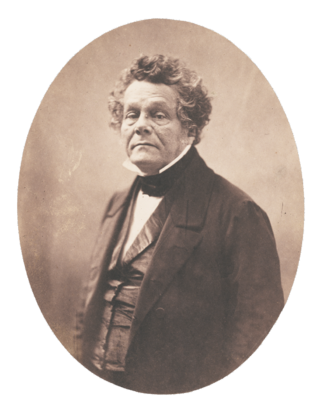
Isaac-Jacob Adolphe Crémieux was a French lawyer and politician who served as Minister of Justice under the Second Republic (1848) and Government of National Defense (1870–1871). He served as president of the Alliance Israélite Universelle, secured French citizenship for Algerian Jews under French rule through the Crémieux Decree (1870), and was a staunch defender of the rights of the Jews of France.

The Vel' d'Hiv' Roundup was a mass arrest of foreign Jewish families by French police and gendarmes at the behest of the German authorities, that took place in Paris on 16 and 17 July 1942. According to records of the Préfecture de Police, 13,152 Jews were arrested, including more than 4,000 children.
The Israelite Central Consistory of France is an institution set up by Napoleon I by the Imperial Decree of 17 March 1808 to administer Jewish worship and congregations in France. He also directed the establishment of regional Israelite Consistories, subordinate to the Central Consistory, across France. The consistories were ranked as établissements publics du culte. Given Napoleon's political emancipation of the Jews, he wanted a representative body that could deal with his government.
David Feuerwerker was a French Jewish rabbi and professor of Jewish history who was effective in the resistance to German occupation the Second World War. He was completely unsuspected until six months before the war ended, when he fled to Switzerland and his wife and baby went underground in France. The French government cited him for his bravery with several awards. After the war, he and his wife re-established the Jewish community of Lyon. He settled in Paris, teaching at the Sorbonne. In 1966, he and his family, grown to six children, moved to Montreal, where he developed a department of Jewish studies at the University of Montreal.

The history of the Jews in Alsace is one of the oldest in Europe. It was first attested to in 1165 by Benjamin of Tudela, who wrote about a "large number of learned men" in "Astransbourg"; and it is assumed that it dates back to around the year 1000. Although Jewish life in Alsace was often disrupted by outbreaks of pogroms, at least during the Middle Ages, and reined in by harsh restrictions on business and movement, it has had a continuous existence ever since it was first recorded. At its peak, in 1870, the Jewish community of Alsace numbered 35,000 people.

A Jewish consistory, , was a body governing the Jewish congregations of a province or of a country; also the district administered by the consistory.
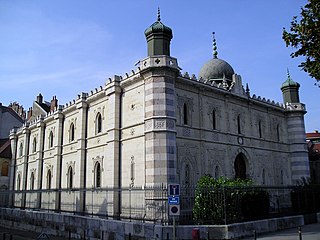
The beginnings of the history of the Jews in Besançon go back to the Middle Ages, a period during which the Jews settled in the city attracted by its activity as a commercial place. The community was founded at the end of the 14th century and, due to its status as a free imperial city, Besançon remained one of the only territories in present-day France to tolerate Jews after their expulsion from the kingdom of France in 1394. The community was nevertheless expelled in turn from Besançon in the middle of the 15th century. The Jews made a tentative return to the city in the 18th century, but it was only after the French Revolution, which emancipated them, that their situation in the Franche-Comté capital stabilized. Although the Jewish community never exceeded 2,000 people except on the eve of the Second World War, it experienced great economic success during the industrial revolution at the end of the 19th century, when the Lipmann family founded LIP, a brand of watchmaking which then became one of the economic engines of the region and remained associated with the name of the city.
Samuel Jacob Rubinstein was a 20th-century French orthodox Chief Rabbi independent from the Consistoire central. He was born in Poland.
Isaac Schneersohn was a French rabbi, industrialist, and the founder of the first Holocaust Archives and Memorial. He emigrated from Ukraine to France after the First World War.

The Grand Synagogue of Paris, generally known as Synagogue de la Victoire or Grande Synagogue de la Victoire, is situated at 44, Rue de la Victoire, in the 9th arrondissement. It also serves as the official seat of the chief rabbi of Paris.

Albert Ouzoulias was a French politician and a Communist leader of the French Resistance during World War II (1939–45) using the name of "Colonel André". He played a major role in the 1944 liberation of Paris.

Alexandre ben Baruch Créhange, who wrote under the pen name Ben Baruch, was a French Jewish writer and communal leader.
The Israelite Seminary of France also known as the Central Rabbinical School of France , is a Rabbinical school that trains Orthodox rabbis in France. Founded in Metz in 1829 as the Central Rabbinical School of Metz, it moved to Paris in 1859, where it is based in the city's 5th arrondissement. The school is connected with the Israelite Central Consistory of France, one of the major bodies of Orthodox Judaism in France.

The green ticket roundup, also known as the green card roundup, took place on 14 May 1941 during the Nazi occupation of France. The mass arrest started a day after French Police delivered a green card to 6694 foreign Jews living in Paris, instructing them to report for a "status check".
Anne-Marcelle Kahn, née Schrameck was the first French woman engineer to graduate from l'École nationale supérieure des mines de Saint-Étienne, in 1919. She later married Louis Kahn, who became the first Jewish French Admiral, and crossed the Pyrenees alone with her two young children to reach safety during the Second World War.
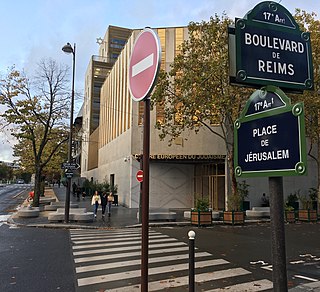
The European Jewish Center is a Jewish cultural center and synagogue located at place de Jérusalem, in the 17th arrondissement of Paris. The project was conceived by Joël Mergui, president of the Israelite Central Consistory of France. Construction began in 2015 and the building was inaugurated on 29 October 2019 in the presence of French President Emmanuel Macron.
References
- ↑ Christian Marbach : Les marins polytechniciens.
- ↑ Roger Peyrefitte, The Jews. A Fictional Venture Into The Follies Of Antisemitism. Bobbs-Merrill: New York City, 1965, p. 330-331.
- ↑ His son Pierre Kahn wrote a book on his father, published by l'Académie de marine. Cited by Susan Zuccotti. The Holocaust, the French, and the Jews, p.358, note 2.
- 1 2 Susan Zuccotti. The Holocaust, the French, and the Jews, p.358, note 2.
- ↑ After his death, in February 1967, Baron Alain de Rothschild, previously president of the Consistoire de Paris, succeeded him as president of the Consistoire Central. See, Arnold Mandel, 1968, p. 452, in "Western Europe".
- ↑ He participated to a ceremony at the Synagogue of Fontainebleau. See, La Synagogue de Fontainebleau. With a photo of Louis Kahn holding a Sefer Torah.
- ↑ "L'Univers israélite". gallica.bnf.fr. 1922-07-07. Retrieved 2021-04-02.
- 1 2 "Marcelle SCHRAMECK". www.janinetissot.fdaf.org. Retrieved 2021-04-02.
- ↑ See, Arnold Mandel, 1968, see Western Europe Archived 2011-07-05 at the Wayback Machine .
- ↑ See, Vichy: Un passé qui ne passe plus.